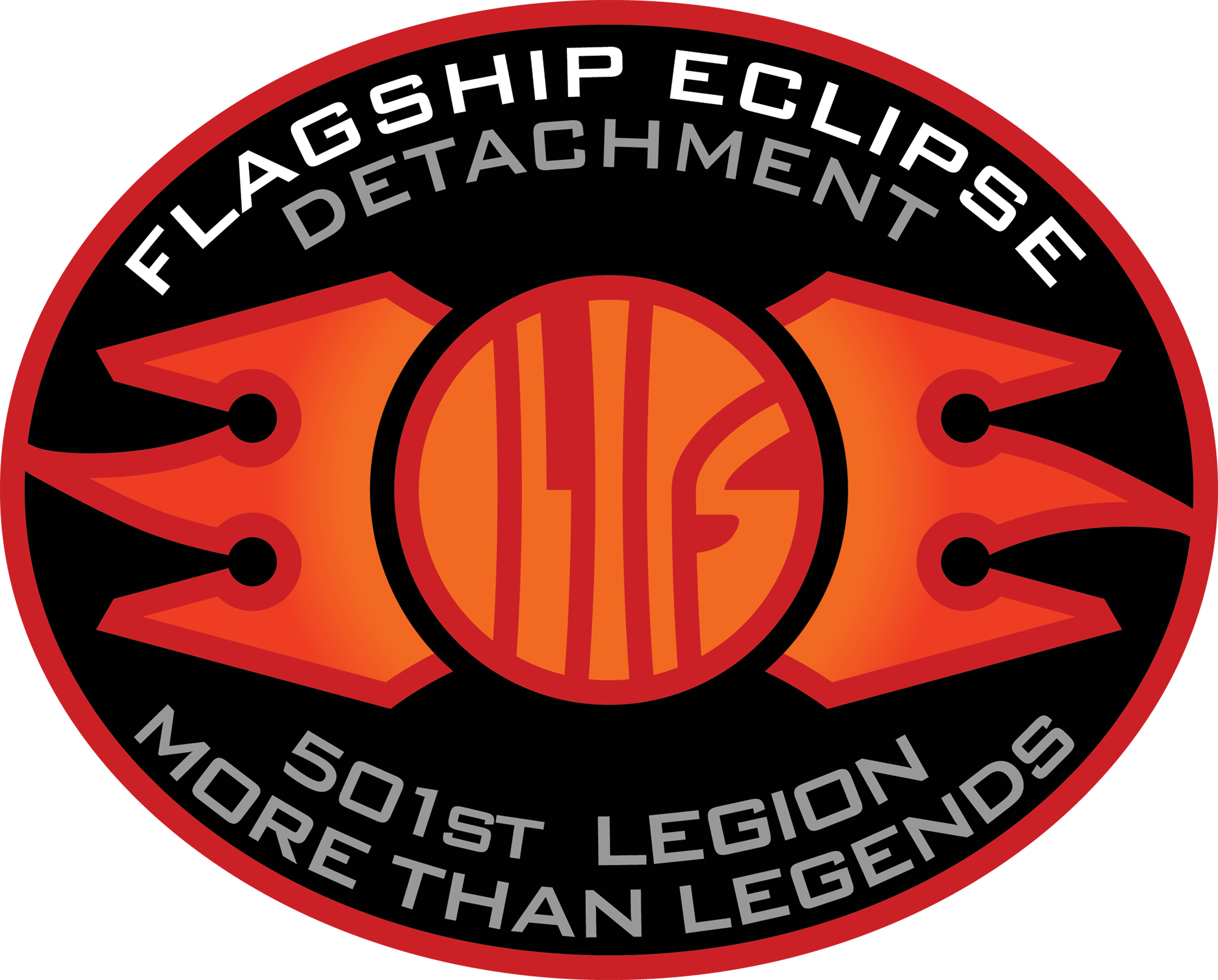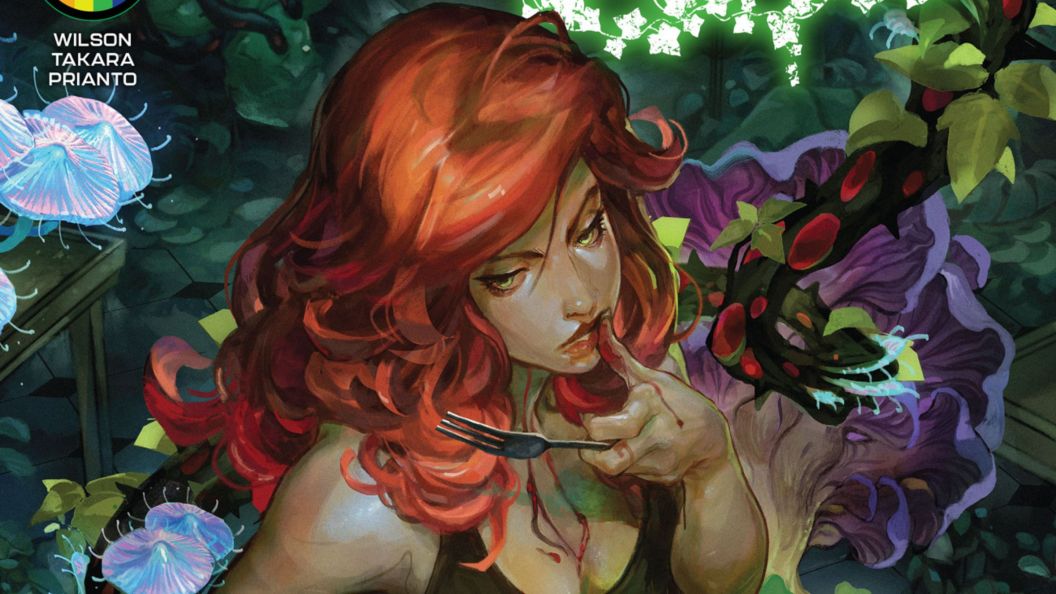
There’s nothing better than tucking into a good graphic novel on a chilly evening. Or any evening, really. Graphic novels come in many forms: fantasy, thrillers, and one of our favorites – horror. Even the horror genre has lots of variety, and today, we’re here to talk about some of the best eco-horror graphic novels to dive into. These are terrifying tales depicting the natural world gone wrong. Sometimes, it’s plant life turning on humanity, while other times, it’s pure ecological destruction, which may hit too close to home for some readers. One thing is certain: these eco-horror adventures will make you look at the world in a whole new light – for better or for worse.
Eco-horror is a unique genre that often incorporates critical commentary about human nature and our environmental impact. While this is a common theme in many tales, it isn’t technically required. Finding a terrifying tale that doesn’t delve too deeply into commentary is possible. Likewise, the odds are good that you’ve seen or read eco-horror without reading it. For example, The Last of Us (both the game and the HBO series) fit the bill. Other examples include Annihilation, Frogs, Wilder Girls, and Cholorphobia. Mind you, this is far from an exhaustive list of examples – there are so many fantastic tales out there waiting to be found.
Farmhand
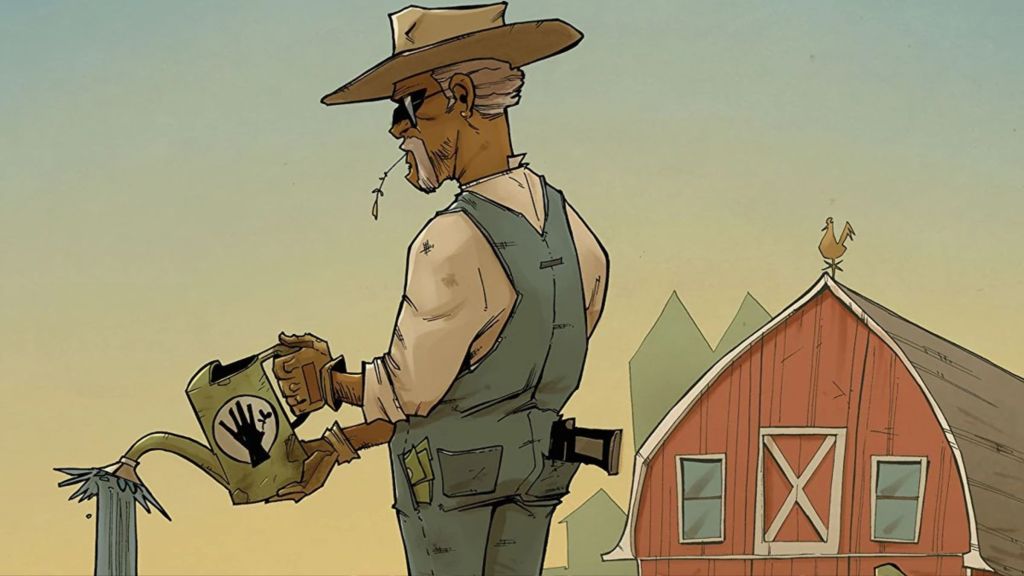
Created by Rob Guillory, Farmhand combines eco-horror with family drama with terrifying results. It all begins with Jedidiah Jenkins, a farm owner with a unique business plan. Instead of growing stereotypical plants, he grows additional limbs and organs for those who need them. Unsurprisingly, growing spare human parts comes with a price, which Jenkins, his family, and the entire town will quickly learn as the miracle farm turns into a monster of apocalyptic proportions.
Farmhand is written and illustrated by Rob Guillory and is published by Image Comics. It is perfect for horror fans seeking an agriculture-themed apocalyptic event, complete with botanical contamination and a dash of Cronenberg horror for good measure.
Family Tree
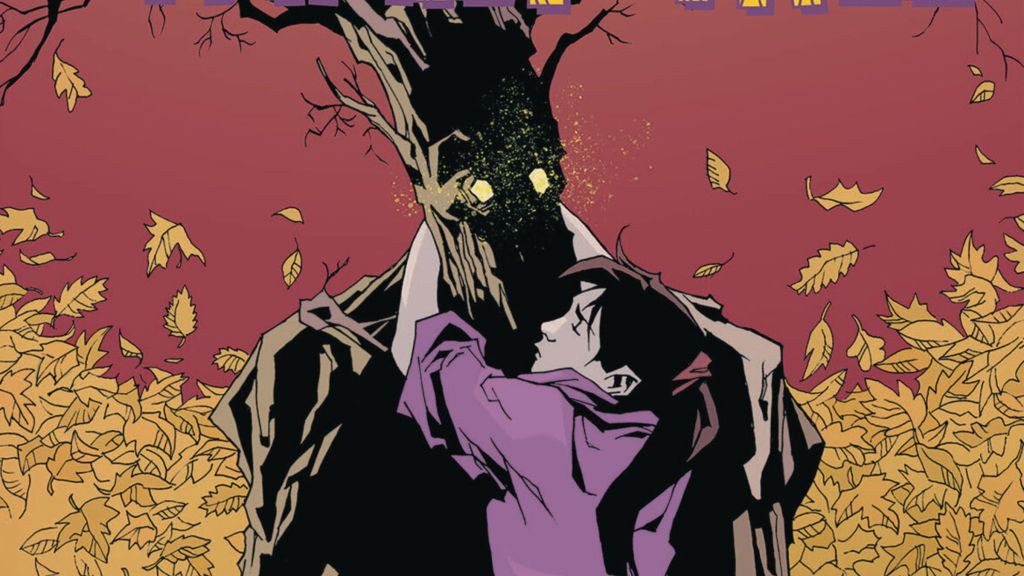
Can one family survive impossible odds? Maybe, if they rally quickly enough. Family Tree begins with a transformation, as Meg inexplicably starts turning into a tree. Thus begins a mad dash for a cure—and for survival. Meg’s family, which includes her mother, brother, and estranged grandfather, are not just racing against time but a mysterious organization and worse. They will soon learn that Meg’s transformation isn’t the first, and it all comes down to the family tree.
Family Tree is written by Jeff Lemire (Sweet Tooth, The Nobody), illustrated by Phil Hester, and published by Image Comics. It’s the perfect blend of Cronenberg and eco-horror. It incorporates elements of family drama, time jumping, and potential dystopian futures. The end result is as complex as it is fascinating.
Swamp Thing by Alan Moore
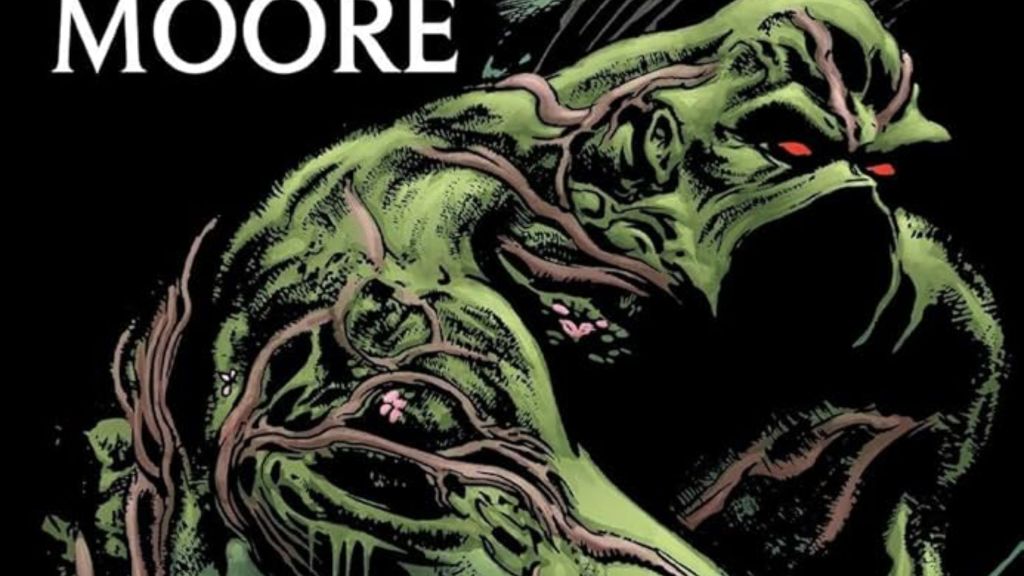
Alan Moore took over writing for Swamp Thing in the 1980s, revolutionizing and revitalizing the story. The first arc is “The Anatomy Lesson,” which essentially rebooted the mythos, introducing new horrors and implications along the way. Delving into the Green, the story raises questions about life vs death, the meaning of the self, and more. It also tackles complex concerns, including environmentalism, marginalization, the effects of trauma, and more.
Let’s be real: even non-comic fans have heard of Swamp Thing, especially Alan Moore’s Swamp Thing. All Swamp Thing comics likely fit into the eco-horror genre. However, Alan Moore’s take is a shining example, especially as it portrays humanity’s threat to the environment through a clear (yet sometimes terrifying) lens. Alan Moore’s Swamp Thing run included artwork by Dan Day, John Totleben, Stephen Bissette, Tom Yeates, and Rich Veith and was published by Vertigo/DC Comics.
Into the Unbeing

Somewhere hidden in the Australian wilderness is something humanity has never seen before. Fortunately, a group of climate scientists were the ones to uncover this landform – one can only imagine what would have happened to any fool who dared mess around with it. The closer the scientists look at what they’ve found, the less believable it is. A hostile alien environment may seem like the dream discovery for any intrepid team, but anyone who’s spent enough time within the realm of science fiction knows where this path will lead.
Into the Unbeing was written by Zac Thompson (Relay, Nature’s Labyrinth), illustrated by Hayden Sherman and Jim Campbell, and published by Dark Horse Comics. The series combines eco-horror with scientific discovery and the need to explore and break new ground, opening the door to several thought-provoking conversations.
[RELATED: 7 Image Comics Perfect for a Horror Adaptation]
Dark Fang

Vampires may not seem like the ideal showrunner to an eco-horror comic, but Dark Fang defies those expectations. As a vampire, Valla has spent much of her time at the bottom of the ocean. It’s peaceful there; she doesn’t have to deal with people. That is, until signs of humanity began to poison the waters she called home. Now, Valla will ascend from the depths to understand the cause of this plague and, ideally, put a stop to it, no matter the price.
Dark Fang is a unique eco-horror with a vampiric lead written by Miles Gunter, illustrated by Kelsey Shannon, and published by Image Comics. It is full of social commentary, especially regarding environmentalism and the use of fossil fuels.
Mother Nature

Tales of corrupt corporations are not uncommon, particularly not in the eco-horror genre (it’s a solid foundation for everything to follow). Nova Terrell’s life was thrown upside down following the death of her father. Worse, Nova was there to see it happen, so she knew the role Cobalt Corporation had to play in this, and thus, she’d begin a campaign to bring the company down. While sabotaging the company from the outside, Nova accidentally stumbles across something that refines her understanding of “Mother Nature.”
Jamie Lee Curtis and Russel Goldman co-wrote Mother Nature, illustrated by Karl Stevens and published by Titan Comics. It was originally written as a screenplay, so readers can hope to see it on the big screen someday (Comet Pictures). Mother Nature is a blend of eco-horror and motherhood, telling a story of loss, environmentalism, and the need for company oversight.
Slow Death Zero
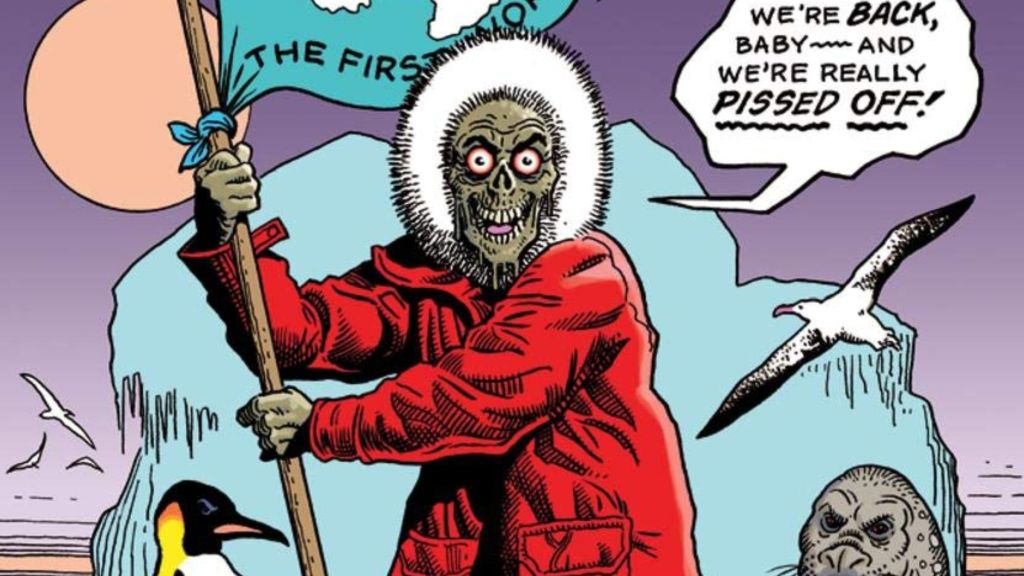
If anthologies are more your speed, there’s always Slow Death Zero: The Comix Anthology of Ecological Horror. The title pretty much says it all, as it brings 33 writers and artists together for a total of 28 stories about global warming, ecological disasters, and environmental horrors. These stories don’t shy away from the real-life implications of melting ice caps, so it’s probably not the best collection to read right before bed – unless you enjoy nightmares.
Slow Death Zero: The Comix Anthology of Ecological Horror was edited by Jon B. Cooke and Ronald E. Turner and had 33 creatives working on the project. Published by Last Gasp (terrifying name, by the way), it is a republication of classic eco-horror tales from Earth Day 1970, showing how long this subgenre has been alive.
The Autumnal

Autumn is the perfect setting for eco-horror, as the changing seasons tease at darker times to come. Enter The Autumnal, a story about Kat Somerville and her daughter Sybil. They’ve fled to a quieter life in New Hampshire, but things aren’t going the way they expected. It’s a familiar beginning, as many a tale has begun with a troubled family returning to their roots. However, this take may be a bit more literal than some. There are horrors best left slumbering, as Kat and Sybil are about to discover – the hard way.
The Autumnal was written by Daniel Kraus (The Shape of Water, Trollhunters), illustrated by Chris Shehan and Jason Wordie, and published by Vault Comics. The Autumnal blends eco-horror with family drama and the supernatural to divine effect.
[RELATED: 4 Horror Comic Adaptations We’re Eagerly Awaiting (And One We Wish Would Return]
Deep Roots

Humanity has long been afraid of what we cannot see or understand. We’re fascinated with alternate dimensions and worlds that lie just out of reach. But what if one of these worlds was close enough to touch? Enter Deep Roots, a tale of two worlds: ours and a realm of plants and monsters. When the latter makes its way into a human-dominated world, things quickly go south as roots and plants take up arms against the species that has been steadily destroying the planet.
Deep Roots is written by Dan Watters (Home Sick Pilots, Lucifer, Limbo), illustrated by Val Rodrigues (Unnatural Order, Mezo), and published by Vault Comics. It’s a true eco-horror with a slightly more literal take on the war between the environment and humanity.
Poison Ivy by G. Willow Wilson

Poison Ivy has been around for decades, so it feels safe to say that even a casual DC fan knows Ivy and her motivations well. Ivy has always stood to defend the environment (plants) against the selfish nature of humanity. She has often been portrayed dancing the lines between activist and eco-terrorist. Yet her story was brought to new heights when G. Willow Wilson took control. Starting with “The Virtuous Cycle,” Ivy will once again step up to save the planet from its biggest threat – the humans. She knows that nothing she says will ever get through to them, so now is the time to take drastic measures. What follows is a strange yet horrifying series of events as Ivy grapples with humanity and beyond.
G. Willow Wilson’s run on Poison Ivy includes dozens of different artists, including Marcio Takara, Brian Level, Stefano Guardiano, Jay Leisten, Arif Prianto, Atagun Ilhan, and others. Published by DC Comics, this take on Poison Ivy fully embraces her eco-horror roots, letting the activist off the leash.
The post 10 Eco Horror Graphic Novels to Send Chills Down Your Spines appeared first on ComicBook.com.
